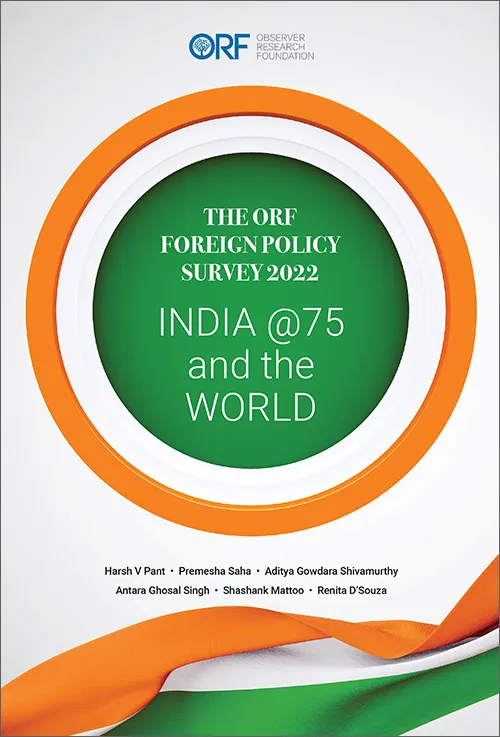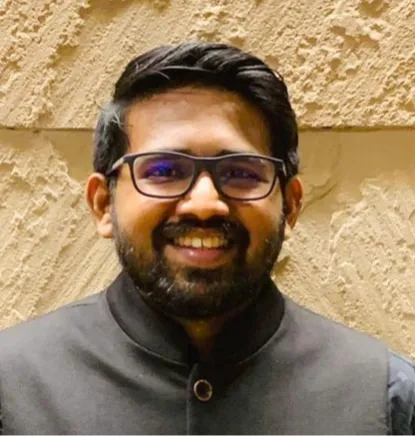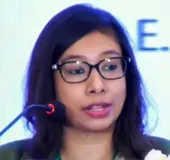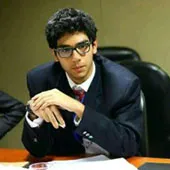Executive Summary

- Urban Indian youth rated the country’s foreign policy positively: 25 percent graded it very good, and 52 percent, good. This is an increase from the 2021 survey report where 32 percent said it was very good, and 40 percent rated it good.
- The respondents named Russia as India’s most reliable partner since Independence (43 percent); the United States followed with 27 percent.
- Of India’s most pressing security challenges, 90 percent of respondents were concerned about the economic disruption caused by the COVID-19 pandemic. Other challenges were terrorism (named by 86 percent of respondents); border conflicts with China (84 percent); and territorial disputes with Pakistan (82 percent). In the 2021 survey, the top concerns were similar: pandemics like COVID-19; terrorism; border conflicts with China; and Pakistan.
- Non-traditional security threats are of great concern to India’s youth: 84 percent named climate change as the challenge of most concern; and 83 percent were concerned about cybersecurity issues. The 2021 survey results were similar: climate change (83 percent) and cybersecurity (82 percent).
- One-third of respondents (34 percent) chose multilateralism as their preferred mode for India’s engagement with other countries, over minilateralism and bilateralism.
- Ninety-one percent of respondents said India’s bid for a permanent seat at the UN Security Council was an important foreign policy goal. In 2021 too, the same share of respondents agreed with the notion.
- Twenty-six percent ranked the grouping of BRICS (Brazil, Russia, China, South Africa) as the most beneficial forum for India’s global goals. Of other forums listed in the survey (i.e., Quad, BIMSTEC, G20, and SCO), the SCO got the lowest rank at 6 percent.
- The respondents said India’s priorities at the G20 and other multilateral forums should include climate finance and adaptation; healthcare preparedness; and global food security.
- Nearly 80 percent agreed that Indian foreign policy has adequately defined what constitutes the country’s ‘neighbourhood’. The respondents expressed trust for the country’s immediate neighbours, except for Pakistan and Afghanistan. In 2021, respondents said they trusted the country’s immediate neighbours except for Pakistan.
- India’s urban youth believed that the country’s bilateral relationships with its neighbours have strengthened, except with Pakistan and Afghanistan. In the 2021 survey, Pakistan was the only South Asian country that the respondents perceived negatively.
- More than one-fourth of respondents (28 percent) expressed strong support for India’s diplomatic efforts following the August 2021 US withdrawal from Afghanistan and the Taliban’s return to power.
- India’s youth are of the view that it is the United States (US) that will most likely be the country’s leading partner in the next 10 years (more than 85 percent of the respondents); 76 percent said it will be Russia. In 2021, 78 percent named the US; and 57 percent, Russia.
- When asked about India’s position should US-China tensions escalate, 49 percent believed India should be neutral. In the 2021 survey, 62 percent said India should side with the US.
- Eighty-three percent of respondents agreed that US support is extremely important for India to rise as a global power in the 21st A little more than seven of every 10 respondents (71 percent) agreed that China poses a challenge to India’s rise.
Introduction
India at 75 is keen to show the world that it has the capacity for global leadership. Meanwhile, the international order that it inhabits is changing rapidly and the challenges are compounding for New Delhi, making it clear that the road to the global centre-stage will not be easy.
For one, the prolonged COVID-19 pandemic continues to stall the full reopening of economies. China’s harsh COVID-19 lockdowns have disrupted supply chains and slowed production even as new variants of the virus continue to delay prospects for recovery. At the same time, other events have required the attention of the international community. The defeat of the US-backed government in Afghanistan in August 2021 and the return of the Taliban raised searching questions about the failures of liberal internationalism and provoked concerns about the prospect of a rise in terrorism in South Asia.
In February 2022 the Russia-Ukraine conflict erupted, disturbing long-held norms of territorial integrity and sovereignty, and paving the way for a new form of total war: the weaponisation of
everything. Ukraine’s supporters in the West have leveraged their dominance in the global financial system to inflict economic costs on Russia, while Moscow has weaponised food and energy exports to protect itself. New Delhi has had to skilfully navigate its relationship with Moscow while strengthening its ties with the United States and Europe. Providing a backdrop to these watershed events is the China challenge, which continues to occupy policymakers in the global capitals as Beijing remains on the offensive: intimidating Taiwan, expanding its diplomatic and security footprint in the Pacific, and pursuing its ambitions of military dominance in Asia.
For India at 75, the strained international situation has complicated its strategic calculus. The world order that ushered in India’s rise following the end of the Cold War is dissipating, and a new one is struggling to take its place.
Closer to home, India’s neighbours are beset by political and economic instability and the ripple effects are threatening to reverberate across the region. Pakistan and Sri Lanka, for example, face a grim economic future and the public are growing increasingly dissatisfied with their governments. In Afghanistan it is a different challenge that awaits India: Almost a year after the US withdrawal and the collapse of the government, New Delhi and the Taliban have cautiously re-established contact in an effort to establish stability, security, and normalcy in the region.
The question for India is what role it will play as the world struggles to find its feet. And how will its ambitions for leadership evolve in a new order? New Delhi has the opportunity to answer these questions when it takes over the presidency of the G20 before the close of 2022. From that pulpit, India will work to set the agenda as the world navigates its realities of recessions and rogue states.
Yet, no nation can hope to bear the burden of international leadership without the support of its citizens. It is in this context that this report,
The ORF Foreign Policy Survey 2022: India @75 and the World, becomes relevant. As India forges its path in global affairs, the views of its youth could light a torch for the country’s conduct as an emerging power. This survey—which builds on, and challenges the findings of ORF's 2021 Foreign Policy Survey,
<1> could hold a key to decoding India at 75.
Context and Rationale for the Poll
Earlier surveys have sought out the Indian public’s views of foreign policy and world affairs. The Indian Institute of Public Opinion, for example, has been conducting annual and bi-annual surveys since 1959 that ask respondents their views of India’s foreign engagements.
<2> In the years since, various targeted polls have solicited the Indian public’s view of epochal events such as the Pokhran nuclear tests, the Kargil War, and the signing of the Indo-US Civil Nuclear Deal.
<3>
Other polls have attempted more expansive research aims and demographic samples. In 2005-06, researchers at the Centre for the Advanced Study of India, University of Pennsylvania, conducted what could be the largest pan-Indian poll on world affairs so far. The survey covered 212,563 interviewees and gathered insights into how Indians belonging to diverse socio-economic and regional groups saw the country’s place in the world.
Media organisations and academics have done similar surveys of their own. These polls have also attempted to assess the Indian citizenry’s views on the country’s foreign, defence, and security policies, and their attitudes towards countries that India engages with. In 2019, a research paper built on the findings of a survey on the implications of counter-insurgency measures on public opinion in Kashmir.
<4> In March 2021, an article collated evidence from various surveys to assess public opinion towards China since the 1960s;
<5> and in August 2022, the Stimson Center released findings of a telephonic survey of 7,000 Indians that assessed public attitudes to India’s national and international conflict scenarios.
<6>
While these efforts have been notable, the early surveys such as the IIOPO polls are yet to be analysed. The latter polls are also often limited to a single event or use a population sample that is limited to rarefied policymaking circles.
The annual
ORF Foreign Policy Survey, of which this is the second iteration, is designed to fill this gap in Indian discourse on world affairs. The first poll, released in August 2021, surveyed a subset of Indian youth with 2,037 respondents from 14 cities. It sought to gather the views of India’s urban youth demographic about the world and the various facets of India’s engagement with it.
Unlike other surveys that have focused on responses to specific events or issues, ORF’s
Foreign Policy Survey attempts a more encompassing review of India’s foreign policy. This second edition of ORF’s flagship poll tracks how India’s urban youth perceive the structural changes underway in the world order even as the Indian Republic, which marked its 75
th independence day in August 2022, begins its ascent as a global power. Covering 5,000 respondents in 19 cities, this year’s survey questions invited young people between 18 and 35 to share their views of India’s world. This demographic cohort makes up 27 percent of India’s urban population, and around 26 percent of the country’s overall population.
<7>
The findings presented in this report can have profound implications for India’s conduct on the global stage. For example, the respondents’ views on the turning points in India’s foreign policy, its traditional foreign policy partners, and its preferred modes of engagement, would reveal the level of support, if at all, enjoyed by the key pillars of India’s diplomatic strategy over the last 75 years. The survey also has an eye on the future. Questions on India’s neighbourhood policy, its emerging geopolitical alignments, and its engagements with forums such as the G20 and UN Security Council interrogate the kind of leadership role that India could play in the next 25 years.
The responses were analysed according to various parameters such as age, employment, gender, occupation, geography, and income. The research team conducted a thorough calculation and assessment of the data before attempting to draw patterns and offer insights.
Methodology and Sample Design
In collaboration with Impetus Research, ORF conducted this national survey of India’s urban youth covering a sample of 5,000 in the age group 18-35. Covering 19 cities across India, the survey aimed to gather views about important aspects of the country’s foreign policy goals.
The primary field work was conducted from June to July 2022. The questionnaire was administered in 10 languages—i.e., Assamese, Bangla, Gujarati, Kannada, Marathi, Odia, Punjabi, Tamil, Telugu, and English. The sample was drawn using a stratified multi-stage cluster sampling approach. Impetus Research used the 2011 Census figures provided by the office of the Registrar General and Census Commissioner, Ministry of Home Affairs, as a sampling frame.
Read the entire report here.
<1> Harsh V Pant, et al.,
The ORF Foreign Policy Survey 2021: Young India and the World, August 2021, Observer Research Foundation.
<2> Aidan Milliff, Paul Staniland, and Vipin Narang, “
Uneven Accountability? Public Attitudes on Indian Foreign Policy since the 1960s,” MIT Political Science Department Research Paper No. 2019-21, 2019, 1–66.
<3> Shivaji Kumar, “
India’s Public Opinion and Foreign Policy: A View from New Delhi,” India Review 17, no. 4 (August 8, 2018): 353–71.
<4> Gautam Nair and Nicholas Sambanis, “
Violence Exposure and Ethnic Identification: Evidence from Kashmir,”
International Organization 73, no. 2 (2019): 329–63.
<5> Aidan Milliff and Paul Staniland,
“Public Opinion Toward Foreign Policy in a Developing World Democracy: Evidence from Indian Views of China,”
SocArXiv, March 2021.
<6> Christopher Clary, Sameer Lalwani, Niloufer Siddiqui, and Neelanjan Sircar, “
Confidence and Nationalism in Modi’s India,” Stimson Center, August 2022.
<7> In the rural districts, this age group comprises 25 percent of the population.
The views expressed above belong to the author(s). ORF research and analyses now available on Telegram! Click here to access our curated content — blogs, longforms and interviews.

 PDF Download
PDF Download




 PREV
PREV






.png)
.png)